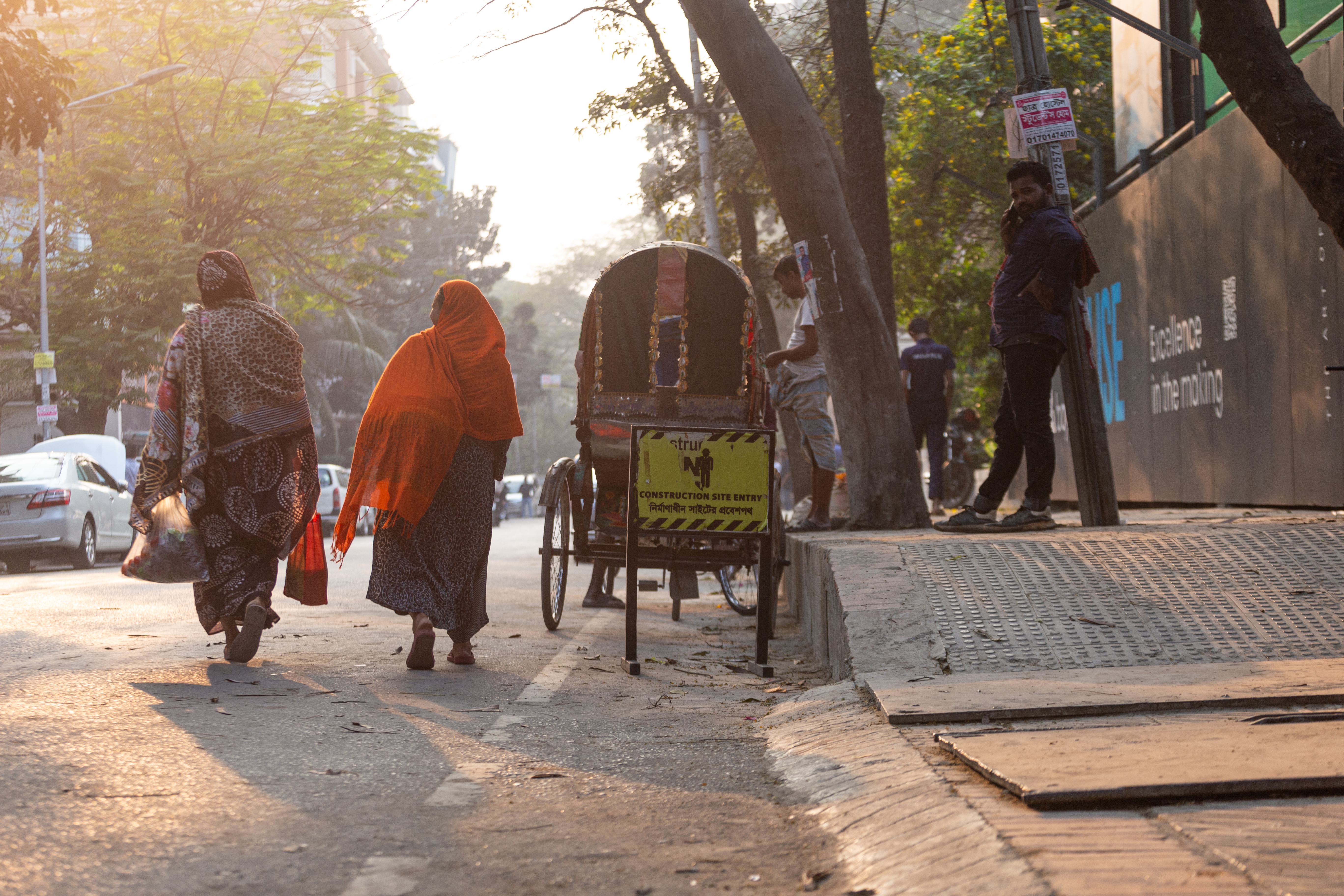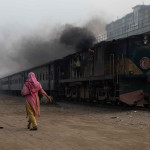
Home | blog
Footpaths of Bangladesh: Our Uneasy Relationship with Walking
Footpaths of Bangladesh: Our Uneasy Relationship with Walking
Published: May 25, 2024 | Updated: February 6, 2025
In the bustling urban chaos of Bangladesh, one might assume that walking is deeply ingrained in the rhythm of daily life. City streets and footpaths are packed with people—shoppers weaving through narrow lanes, children on their way to school, vendors hawking snacks, and workers navigating the daily commute. Yet, paradoxically, the sheer presence of pedestrians on footpaths does not translate into a thriving walking culture. Instead, it reflects a desperate lack of alternatives in an environment that often treats walking as a last resort rather than a respected and valued mode of transportation.
This contradiction prompts a broader reflection: Why has walking failed to gain legitimacy in Bangladeshi urban life, despite the apparent reliance on it? Why are our footpaths so poorly maintained, encroached upon, or outright missing, despite their critical role in public mobility?
Understanding Culture and Walkability
Culture is a complex and often contested concept. At its core, it encompasses a community's shared values, behaviors, symbols, and practices. Culture is not merely what people do, but how they interpret and assign meaning to those actions. Walking, viewed through this lens, is not simply a physical activity—it is a social and cultural practice shaped by norms, status perceptions, gender dynamics, economic class, and urban design.
So, is walking an embedded part of Bangalee urban culture? The answer is nuanced. While walking is widespread due to economic necessity, it is rarely perceived as a dignified, desirable, or strategic choice. Instead, the act of walking is heavily classed and stigmatized.
The Built Environment: Infrastructural Barriers to Walking
The foremost barrier to walking is the built environment itself. Cities in Bangladesh have long neglected the importance of walkable infrastructure. Urban planning continues to prioritize motorized transport, with footpaths—if they exist—often narrow, broken, obstructed, or dangerous. In many areas, footpaths are colonized by informal businesses, parked motorcycles, construction materials, or even used as waste disposal sites.
Jeff Speck, in his influential book Walkable City: How Downtown Can Save America, One Step at a Time (2012), outlines a "General Theory of Walkability," asserting that a walk must fulfill four basic conditions to be appealing: usefulness, safety, comfort, and interest. Most Bangladeshi cities, particularly Dhaka, fail on nearly all counts:
-
Usefulness: The fragmented and chaotic urban layout means that basic services and destinations are not organized in a way that encourages walking. Roads are designed primarily for cars, with pedestrians as an afterthought.
-
Safety: With few dedicated pedestrian crossings, insufficient lighting, and rampant traffic violations, walking in Bangladeshi cities is a dangerous activity. Footpaths are often absent or inaccessible, forcing pedestrians to share roads with speeding vehicles.
-
Comfort: The footpaths that do exist are rarely maintained. Uneven surfaces, open drains, and encroachments deter anyone who might choose walking as a comfortable alternative.
-
Interest: While Bangladeshi streets are undeniably vibrant, they often lack the elements that make walking a pleasurable experience—greenery, street art, safe public spaces, or coherent architectural design. Instead, the pedestrian is greeted with noise, pollution, and a lack of visual or environmental harmony.
Social Stigma and Class Perceptions
Beyond physical infrastructure, walking in Bangladesh is entangled with issues of class, status, and respectability. In many circles, walking is seen as an act of economic compulsion, not autonomy. Middle-class aspirations are tied to private vehicles, air-conditioned rides, and avoiding the discomforts of the street. This perception is captured in the pervasive notion of ijjot (honour), where street-walking is implicitly associated with hardship and lower socioeconomic status.
For the working class, walking is not a choice but a necessity. For the elite, it's often a spectacle—acceptable only in controlled environments like shopping malls, parks, or airport lounges. This bifurcation in perception widens the social gap and alienates the idea of public pedestrian infrastructure as a common good.
Gender and Walking
The issue is further complicated when viewed through a gendered lens. For many women, walking in public spaces is fraught with harassment, danger, and discomfort. The lack of gender-sensitive urban design—poor lighting, absence of surveillance, lack of public toilets—makes walking a risky endeavor. Consequently, women are disproportionately excluded from urban mobility unless they have access to safe, private transport.
Reclaiming the Footpath: A Vision for Equitable Urbanism
To change this reality, a transformation in both infrastructure and cultural attitude is essential. Bangladesh must invest in pedestrian-centric planning that treats footpaths not as leftover spaces but as primary arteries of the urban ecosystem. This includes:
-
Enforcing clear zoning laws to protect pedestrian rights-of-way.
-
Developing wide, well-lit, continuous footpaths free from encroachments.
-
Instituting safe pedestrian crossings, overpasses, and underpasses.
-
Building shade structures, seating, and greenery to enhance comfort.
-
Introducing gender-inclusive features such as lighting, signage, and surveillance.
-
Launching public awareness campaigns to promote walking as a dignified, healthy, and environmentally sound choice.
We must also shift public imagination. Walking should be rebranded—not as a symbol of hardship, but as an act of civic responsibility, personal health, and cultural pride. Cities like Copenhagen, Bogotá, and Tokyo have redefined walking through deliberate policy, design, and education. Bangladesh can follow suit if walking is embraced not just as a mode of mobility, but as a mode of life.
Conclusion
The current state of footpaths in Bangladesh is not merely a matter of urban design—it reflects deep social hierarchies, cultural apathy, and planning failures. To foster a genuine walking culture, the nation must tackle these challenges head-on. Only then can walking evolve from an act of necessity into a collective civic right, reinforcing dignity, inclusion, and sustainability in urban life.


